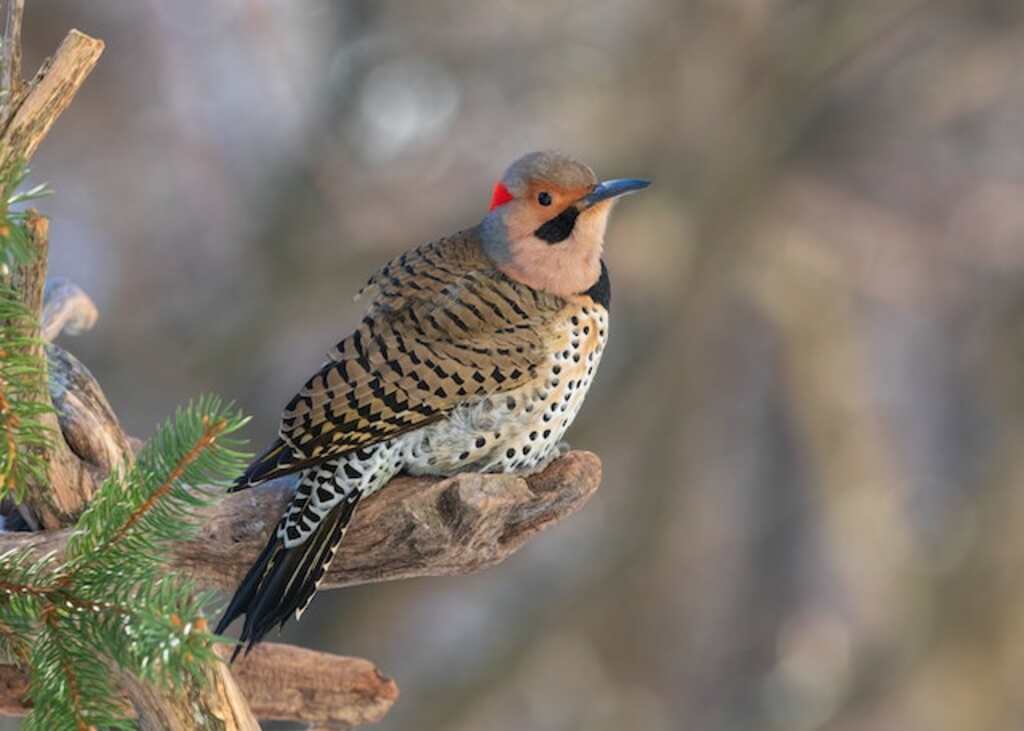Get ready to meet the superstar of the Alabama bird world – the Northern Flicker, AKA the Yellowhammer. This woodpecker species is the state bird of Alabama and is truly one-of-a-kind. Not only does it add to the natural beauty of Alabama’s environment, but it also plays a vital role in the state’s ecology.
With its grayish-brown feathers and yellow underwings, the Northern Flicker has a distinctive appearance that’s hard to miss. But its uniqueness doesn’t stop there – this bird is also known for its quirky vocalizations, which can be heard echoing through the state’s forests and woodlands.
Despite its popularity, the Northern Flicker’s population has been on the decline in recent years. But don’t despair, bird lovers! By taking steps to protect this special species, we can ensure that the Yellowhammer’s distinct calls and songs continue to grace our ears for generations to come.
Table of Contents
- 1 Introduction to the Alabama State Bird: Northern Flicker
- 2 History and Significance of the Northern Flicker in Alabama
- 3 Why the Northern Flicker is the State Bird of Alabama
- 4 The Anatomy and Characteristics of the Northern Flicker
- 5 The Behavior and Social Life of Northern Flickers
- 6 The Diet of the Northern Flicker
- 7 The Northern Flicker’s Role in Culture and Society
- 8 Current Threats to the Northern Flicker Population and Conservation Efforts
- 9 Northern Flicker Fun Facts
- 10 The Alabama State Bird: Why the Northern Flicker is a Source of Pride
- 11 FAQs about Alabama State Bird, the Northern Flicker
- 12 Conclusion
- 13 Author
Introduction to the Alabama State Bird: Northern Flicker
If you are a bird lover in Alabama, you must have come across the Northern Flicker, the state bird of Alabama. This medium-sized bird is known for its striking plumage and unique behavior.
Here is a brief introduction to the Northern Flicker, giving you an insight into its identification, behavior, and significance as a state symbol.
Bird Identification
The Northern Flicker is a woodpecker species that is easily identifiable by its unique markings. The bird’s plumage is a mix of brown, black, and white, with a prominent black crescent on its chest.
The males have a red mark on the back of their head and a black mustache running across its bill, while the females have a brown patch in the same place. The bird’s wings have a distinct white patch, visible in flight, and its tail feathers are black with white spots.
Behavior
Unlike most woodpeckers, the Northern Flicker spends a considerable amount of time on the ground, foraging for insects. The bird has a long barbed tongue that can extend up to two inches beyond its beak, making it easier to catch prey.
The Northern Flicker is also known for its drumming behavior, where it taps on trees to communicate with other birds and establish its territory.
Alabama Wildlife and State Symbol
The Northern Flicker is one of the 420 bird species found in Alabama and plays a crucial role in the state’s ecology. The bird’s declining numbers, particularly the eastern yellow-shafted flicker, are a cause of concern for conservationists.
The Northern Flicker’s significance as a state symbol dates back to the Civil War era, where a group of young cavalry soldiers from Huntsville were nicknamed the “Yellowhammers” after the bird’s call. The nickname later became synonymous with Alabama’s state bird, the Northern Flicker.
In conclusion, the Northern Flicker is a unique and fascinating bird that is an essential part of Alabama’s wildlife. Its striking plumage, ground foraging behavior, and significance as a state symbol make it a bird worth knowing and appreciating.
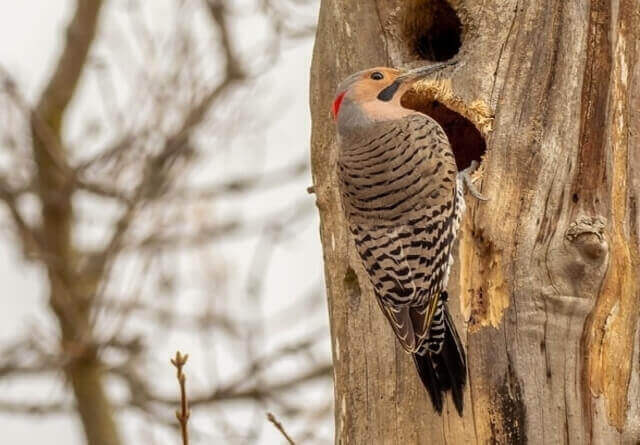
History and Significance of the Northern Flicker in Alabama
The Northern Flicker, also known as the Yellowhammer, has a rich history in Alabama that dates back to the indigenous cultures that once inhabited the region. Here are some sub-sections that highlight the significance of the Northern Flicker in Alabama:
Indigenous Cultures and the Northern Flicker
Native American tribes, such as the Creek and the Cherokee, considered the Northern Flicker to be a sacred bird. These tribes believed that the Northern Flicker was a messenger between the spirit world and the physical world.
They also believed that the bird had healing powers and could bring good luck to those who saw it. The Northern Flicker was also used in various rituals and ceremonies.
For example, the Creek tribe used the feathers of the Northern Flicker in their ceremonial headdresses, while the Cherokee tribe used the bird’s feathers in their medicine bundles.
Bird Habitat Loss
The Northern Flicker is a native bird species in Alabama, but its population has been declining in recent years. One of the primary reasons for this decline is habitat loss. As the state’s forests have been cleared for development and agriculture, the Northern Flicker has lost much of its natural habitat.
Bird Symbolism
The Northern Flicker was adopted as the state bird of Alabama in 1927. The bird’s significance to the state is reflected in its nickname, the Yellowhammer State, which is derived from the bird’s other common name.
The Northern Flicker is also a symbol of resilience and adaptability. The bird is known for its ability to thrive in a variety of habitats, from forests to urban areas.
Bird Folklore
The Northern Flicker has been the subject of many myths and legends throughout history. Some cultures believed that the bird was a symbol of good luck and prosperity, while others believed that it was a harbinger of death and misfortune.
In Alabama, the Northern Flicker is often associated with the state’s rich history and culture. The bird’s presence in the state serves as a reminder of the importance of preserving the natural habitats that are essential to the survival of native bird species.
Overall, the Northern Flicker is an important bird species in Alabama. Its rich history and cultural significance make it a beloved symbol of the state’s natural heritage.
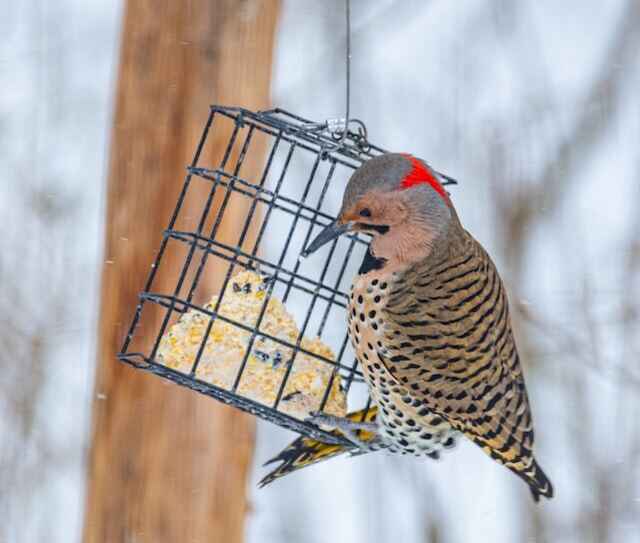
Why the Northern Flicker is the State Bird of Alabama
As you may know, the Northern Flicker is the state bird of Alabama. But have you ever wondered why this particular bird was chosen to represent the state? Well, there are a few reasons for this.
Firstly, the Northern Flicker is a common species that can be found year-round in Alabama. It is also a migratory bird that chooses the state as one of its homes away from home.
As a result, the Northern Flicker has become closely associated with Alabama’s natural environment and wildlife.
Secondly, the Northern Flicker has a unique appearance that makes it stand out. It has a vibrant yellow underbelly and black spots on its back, which gives it a distinctive look.
This appearance is what led to the Northern Flicker being nicknamed the “Yellow-hammer,” which is another name for Alabama.
Finally, the Northern Flicker has a fascinating behavior that makes it an interesting bird to observe. For example, it is a natural predator of the European corn borer moth, which is responsible for significant crop losses in the United States.
Moreover, to defend against parasites and assist in grooming, the bird uses ants that produce a substance called formic acid, and rubs its feathers with them.
Overall, the Northern Flicker is a worthy state symbol for Alabama. It is a fascinating bird that is closely associated with the state’s natural environment and wildlife.
Its unique appearance and behavior make it an interesting bird to observe, and its nickname, the “Yellow-hammer,” is a nod to Alabama’s history and culture.
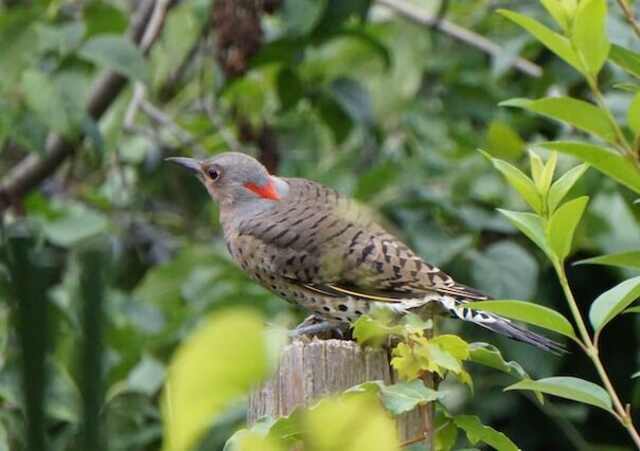
The Anatomy and Characteristics of the Northern Flicker
The Northern Flicker is a unique bird species that belongs to the woodpecker family. Here are some of the key characteristics and features that make the Northern Flicker stand out:
Unique Features and Adaptations of the Northern Flicker
- Size: Northern Flickers are relatively large birds, measuring from 11 to 12 inches in length. They have a wingspan of 17 to 21 inches, and they weigh between 3 and 5 ounces.
- Plumage: The Northern Flicker displays a light beige or yellow underside with dark spots or bars, and features a noticeable white rump that becomes apparent during its deeply undulating flight. Each subspecies of this particular bird species displays brown-and-black barring on its back and wings, as well as a buff-colored or whitish breast embellished with black spots. Additionally, both subspecies exhibit a distinct black “necklace”.
- Beak: The Northern Flicker has a long, slightly curved beak that is adapted for drilling into trees to find food.
- Tongue: The tongue of the Northern Flicker is long and barbed, which helps it to capture insects inside trees.
- Flight: The Northern Flicker has a unique flight pattern that is characterized by a deep, undulating flight.
- Habitat: The Northern Flicker is a woodpecker species that is found in open woodlands, forest edges, and suburban areas.
Comparison to Other Similar Bird Species
The Northern Flicker is a woodpecker species that is often confused with other similar bird species. Here are some of the key differences between the Northern Flicker and other similar bird species:
- Red-bellied Woodpecker: The Red-bellied Woodpecker is a similar-looking bird species that is found in the eastern United States. However, the Red-bellied Woodpecker has a red head and nape, while the Northern Flicker has a beige or yellow head and nape.
- Pileated Woodpecker: The Pileated Woodpecker is another similar-looking bird species that is found in the eastern United States. However, the Pileated Woodpecker is much larger than the Northern Flicker, and it has a distinctive red crest on its head.
In conclusion, the Northern Flicker is a unique and fascinating bird species that is well-adapted to its environment. Its distinctive features and adaptations make it easy to identify, and its behavior and ecology make it an important part of the avian ecosystem.
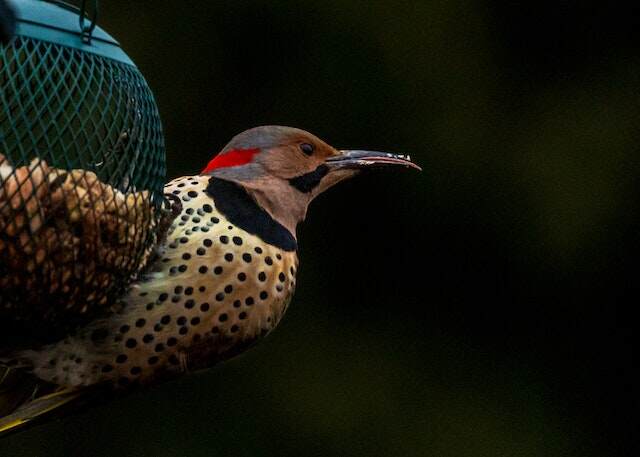
The Behavior and Social Life of Northern Flickers
Social Behavior and Communication among Northern Flickers
Northern Flickers are social birds that are often found in small groups. They communicate with each other through a variety of calls, including a loud, ringing “wick-a-wick-a-wick” call that is often heard during the breeding season.
They also use drumming to communicate, which involves rapidly tapping their beaks against trees or other objects to create a loud, resonant sound.
Nesting and Breeding Habits of Northern Flickers
Northern Flickers are cavity-nesting birds, which means they nest in holes in trees or other objects. They excavate their own nest cavities using their strong, stout beaks.
Usually, female birds lay around 3 to 12 eggs on wood chips that remain from the excavation of the nest. Once they form a pair, both males and females cooperate to incubate the eggs and nurture the offspring.
The Role of Northern Flickers in Ecosystem Dynamics
Northern Flickers are insectivorous birds that play an important role in forest ecosystems. They feed on a variety of insects, including ants, beetles, and termites, which helps to control their populations.
They are also ground-foraging birds, which means they help to aerate the soil and distribute nutrients as they search for food.
As cavity-nesting birds, Northern Flickers are also considered keystone species, as their nesting activities create habitat for a variety of other birds and animals.
However, their populations are declining in some areas, particularly the eastern yellow-shafted flicker, due to factors such as the use of pesticides on lawns and other feeding areas, and diminishing eastern forests.
In summary, Northern Flickers are fascinating birds with unique behaviors and an important role in ecosystem dynamics.
Their social behavior and communication, nesting and breeding habits, and role as keystone species make them a valuable part of our natural world.

The Diet of the Northern Flicker
As an insectivorous bird, the Northern Flicker has a varied diet that includes insects, fruits, berries, and seeds. In this section, we will explore the dietary habits of the Northern Flicker, its relationship with its food sources, the importance of its diet in the ecosystem, and tips for feeding Northern Flickers in your backyard.
Overview of the Northern Flicker’s Dietary Habits
The Northern Flicker is an opportunistic feeder, which means it will eat whatever food is available. Its primary diet consists of ants, which make up about half of its diet. The Northern Flicker uses its long barbed tongue to extract ants and other insects from crevices and holes in trees.
It also eats other insects such as flies, butterflies, moths, beetles, and even snails. In addition to insects, the Northern Flicker will also eat fruits, berries, and seeds, especially in the winter.
This bird’s diet consists of a variety of fruits and berries, such as poison oak and poison ivy, dogwood, sumac, wild cherry, grape, bayberries, hackberries, and elderberries. Additionally, it also consumes sunflower and thistle seeds.
The Relationship between the Northern Flicker and its Food Sources
The Northern Flicker’s diet is closely tied to forest management practices and deadwood ecology. Deadwood provides habitat for insects, which are an important food source for the Northern Flicker.
Forest management practices that remove deadwood can have a negative impact on the Northern Flicker’s food supply.
The Importance of the Northern Flicker’s Diet in the Ecosystem
The Northern Flicker plays an important role in the ecosystem as a predator of insects. By eating insects, it helps to control their populations. In addition, the Northern Flicker’s foraging behavior helps to distribute seeds and promote the growth of plants.
Tips for Feeding Northern Flickers in Your Backyard
If you want to attract Northern Flickers to your backyard, you can provide them with a variety of foods. They will eat suet, sunflower seeds, peanuts, and other nuts. You can also provide them with fruits and berries, such as grapes and elderberries.
To attract Northern Flickers to your backyard, you can put up a suet feeder or a platform feeder. You can also provide them with a birdbath for drinking and bathing. Make sure to clean your feeders and birdbath regularly to prevent the spread of disease.
In conclusion, the Northern Flicker’s diet is diverse and includes insects, fruits, berries, and seeds. Its foraging behavior is closely tied to forest management practices and deadwood ecology.
The Northern Flicker plays an important role in the ecosystem as a predator of insects and a distributor of seeds.
By providing Northern Flickers with a variety of foods, you can attract them to your backyard and enjoy watching them feed and forage.
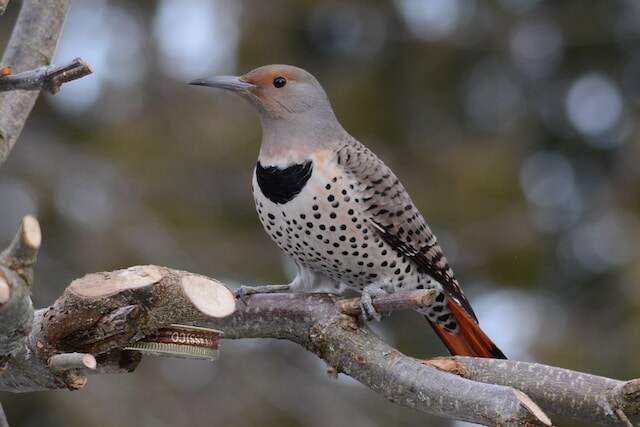
The Northern Flicker’s Role in Culture and Society
The Northern Flicker, also known as the Yellowhammer, has played an important role in the culture and society of Alabama. Here are some sub-sections that explore the different aspects of this role.
Folklore and Symbolism Associated with the Northern Flicker
Bird folklore and symbolism have been a part of human culture for centuries, and the Northern Flicker has its own place in this rich tradition.
In Native American folklore, the Northern Flicker is often associated with the spirit world and is believed to have the ability to communicate with the dead.
The bird is also considered a symbol of protection, and its feathers are used in various ceremonies.
The Northern Flicker in Literature and Art
The Northern Flicker has also made its mark in literature and art. In the novel “To Kill a Mockingbird” by Harper Lee, the character Atticus Finch tells his children that the Northern Flicker is also known as the “Wake-Up Bird” because of its distinctive call.
The bird has also been featured in various artworks, including paintings, sculptures, and even jewelry.
In conclusion, the Northern Flicker has been an important part of Alabama’s culture and society, with its unique folklore, symbolism, and representation in literature and art.
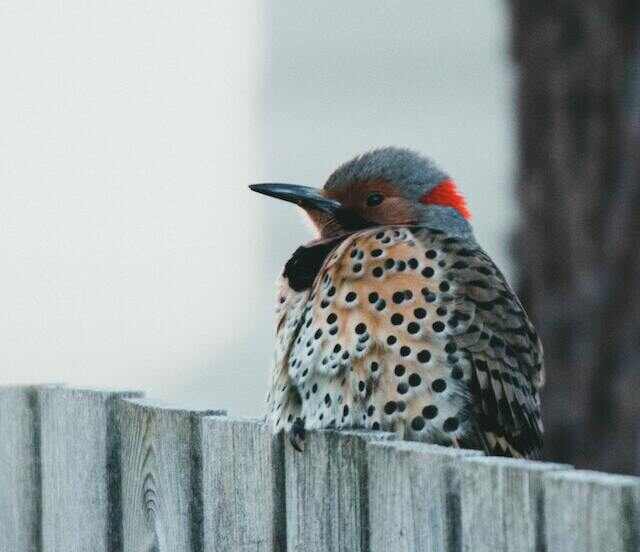
Current Threats to the Northern Flicker Population and Conservation Efforts
The Northern Flicker is currently classified as a moderate conservation concern in Alabama, where it is the state bird. While the species is not endangered, it faces several threats to its population, including habitat loss, pesticide use, and competition with non-native species.
The Role of Citizen Science in Monitoring Northern Flicker Populations
Citizen science programs have played a vital role in monitoring Northern Flicker populations and collecting data on their behavior, habitat use, and distribution.
These programs allow volunteers to contribute to scientific research by reporting sightings and collecting data on bird behavior and ecology.
One such program is the Breeding Bird Survey, which uses standardized protocols to monitor bird populations across North America.
The data collected by this program has been used to track changes in Northern Flicker populations over time and identify areas where conservation efforts are needed.
Another program, eBird, allows birders to record their sightings and contribute to a global database of bird observations.
This program has been used to map the distribution of Northern Flickers and identify areas where they are most abundant.
Conservation Efforts
Several conservation efforts are underway to protect Northern Flicker populations and their habitat. These efforts include:
- Habitat conservation: The Northern Flicker requires open woodlands and forest edges for nesting and foraging. Habitat conservation efforts aim to protect and restore these habitats by reducing logging and development in critical areas.
- Pesticide reduction: Pesticides can be harmful to Northern Flickers and other bird species. Conservation efforts aim to reduce the use of pesticides in areas where Northern Flickers are known to occur.
- Invasive species management: Non-native species, such as European Starlings and House Sparrows, can compete with Northern Flickers for nesting sites and food. Conservation efforts aim to manage invasive species populations and reduce their impact on native bird species.
Overall, conservation efforts are critical to protecting the Northern Flicker and other bird species in Alabama and across their range. By monitoring populations and protecting habitat, we can ensure that these amazing birds continue to thrive for generations to come.
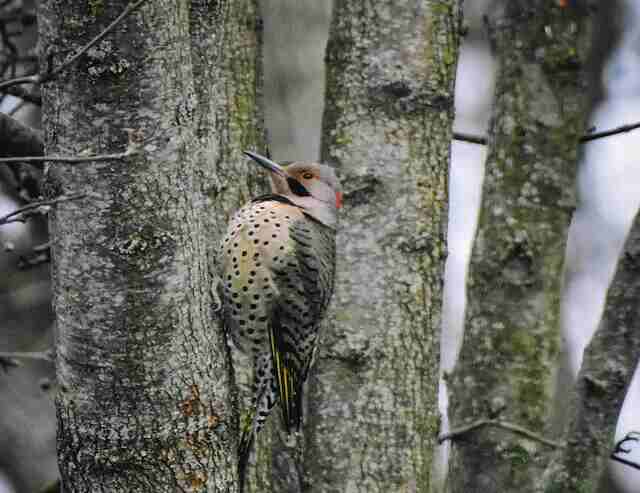
Northern Flicker Fun Facts
If you’re interested in learning more about the Alabama state bird, the Northern Flicker, then you’re in luck! Here are some fun facts about this amazing bird:
- Taxonomy: The Northern Flicker belongs to the scientific family Picidae, which includes woodpeckers. The classification is divided into two categories: yellow-shafted and red-shafted. Both groups are nearly identical but have a few distinctions.
- Appearance: The Northern Flicker is a medium-sized bird, measuring around 11-12 inches in length. It has a brownish-gray head, a white rump, and a black bib on its chest. Its wings are barred with black and brown feathers, and it has a bright yellow or red patch on the nape of its neck, depending on the group it belongs to.
- Diet: The Northern Flicker primarily feeds on insects, but it will also eat fruits, seeds, berries, and nuts. It is one of the few woodpeckers that frequently forages on the ground. To catch insect prey, it uses its long barbed tongue, which can dart out two inches beyond the end of its bill.
- Life Cycle: Northern Flickers mate for life and typically breed once per year. They excavate nest cavities in dead or dying trees and line them with wood chips. The female lays around 6-8 eggs, which both parents incubate for around 11-12 days. The young fledge after around 25-28 days.
- Migration: Northern Flickers are migratory birds, but the extent of their migration depends on the group they belong to. Yellow-shafted Northern Flickers breed in the eastern part of North America and migrate to the southern United States, Mexico, and Central America for the winter. Red-shafted Northern Flickers breed in the western part of North America and may migrate to other parts of the continent.
- Population: While Northern Flickers are still a common species in Alabama, bird surveys show that their numbers are declining, particularly in the eastern yellow-shafted group. Possible reasons for this decline include the use of pesticides on lawns and other feeding areas and diminishing eastern forests.
Overall, the Northern Flicker is a fascinating bird with many unique characteristics. Whether you’re a bird enthusiast or just curious about the Alabama state bird, learning about the Northern Flicker is sure to be an enjoyable experience.
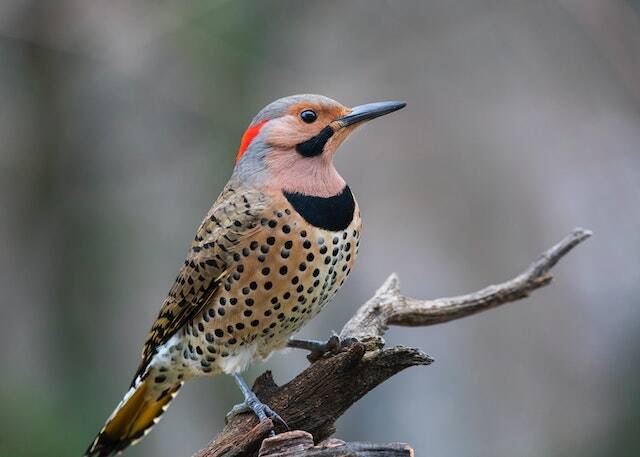
The Alabama State Bird: Why the Northern Flicker is a Source of Pride
If you’re a proud Alabamian, you already know that the Northern Flicker is the state bird of Alabama. This amazing bird is a symbol of the state’s diverse wildlife and natural beauty. Here are a few reasons why the Northern Flicker is a source of pride for Alabama:
- It’s a unique and beautiful bird: The Northern Flicker is a type of woodpecker that is known for its striking appearance. It has a brown back with black bars, a white rump, and a spotted belly. Male individuals possess a dark-colored mustache, whereas their female counterparts lack this feature. They also have a bright red patch on the back of their head that is visible when they fly.
- It has a fascinating history: The Northern Flicker became the state bird of Alabama in 1927. It was chosen because of its connection to the Civil War. During the war, a group of soldiers from Huntsville wore yellow uniforms that reminded people of the flicker’s feathers. The soldiers became known as the “Yellowhammers,” and the bird became a symbol of Alabama.
- It’s a resilient species: The Northern Flicker is a common bird in Alabama, but its population is declining. This is due to the use of pesticides on lawns and other feeding areas, as well as the destruction of eastern forests. Despite these challenges, the Northern Flicker remains a resilient species that continues to thrive in Alabama.
As a state symbol, the Northern Flicker represents the natural beauty and diversity of Alabama’s wildlife. It’s a bird that Alabamians can be proud of, and one that deserves our protection and conservation efforts.
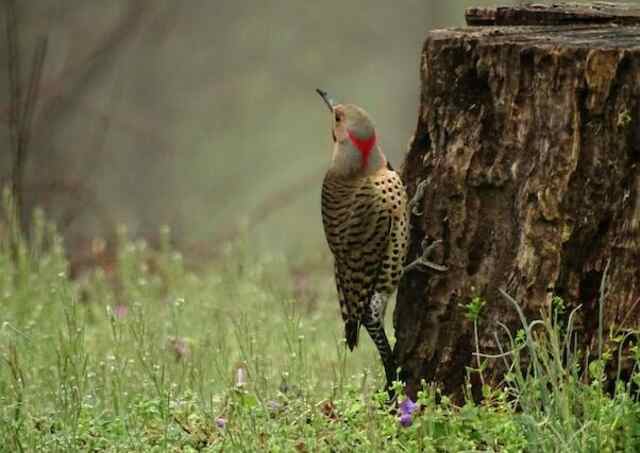
FAQs about Alabama State Bird, the Northern Flicker
If you are curious about Alabama’s state bird, the Northern Flicker, you may have some questions. Here are some frequently asked questions about this amazing bird:
What is the Northern Flicker?
The Northern Flicker, also known as the Yellowhammer, is a medium-sized woodpecker found throughout North America. It is a common species in Alabama, and is present year-round. The bird is easy to identify due to its unique features, such as a conspicuous white rump, gray crown, and bright yellow feathers under the tail and wings.
What are the different types of Northern Flicker?
There are two types of Northern Flicker: the yellow-shafted and the red-shafted. The yellow-shafted flicker is the most common type found in Alabama and has a red patch on the nape of the neck. The red-shafted flicker has red feathers under its wings and tail.
What is the Northern Flicker’s behavior like?
Unlike many woodpeckers, the Northern Flicker stands out from other woodpeckers due to its frequent foraging on the ground. Its diet consists mainly of insects, however, it is known to consume a variety of other foods including fruits, seeds, berries, and nuts. The bird uses its long barbed tongue, which can dart out two inches beyond the end of the bill, to snatch insect prey.
What is the Northern Flicker’s breeding habit?
Northern Flickers breed in the spring and summer months. They nest in cavities in trees, and both males and females help to excavate the nest. The female lays 5-8 eggs, which both parents take turns incubating for about 11-12 days. The chicks fledge about 25-28 days after hatching.
What is the Northern Flicker’s range?
The Northern Flicker has a vast distribution across North America and can be observed year-round in Alabama. However, recent bird surveys indicate a decline in the population of flickers, specifically the eastern yellow-shafted flicker.
Possible reasons for this decline include the use of pesticides on lawns and other feeding areas, and diminishing eastern forests.
In summary, the Northern Flicker is a fascinating bird with unique features and behavior. It is a common species in Alabama, but its numbers are declining. By learning more about this amazing bird, we can better appreciate and protect it for future generations.

Conclusion
In conclusion, the Northern Flicker is a fascinating bird that has captured the hearts of many Alabamians. As the state bird of Alabama, this woodpecker is a symbol of the state’s natural beauty and diversity.
Throughout this article, you have learned about the Northern Flicker’s unique characteristics, including its colorful plumage, distinctive call, and impressive hunting skills.
You have also discovered how it plays a crucial role in Alabama’s environment and ecology.
It’s important to note that the Northern Flicker, like many other bird species, is facing challenges such as habitat loss and pesticide use.
As responsible citizens, we can take steps to protect these birds by supporting conservation efforts, avoiding the use of harmful chemicals, and promoting habitat restoration.
In summary, the Northern Flicker is a bird worth celebrating and protecting. Its beauty, intelligence, and ecological importance make it a valuable part of Alabama’s natural heritage.
By working together to preserve its habitat and reduce threats, we can ensure that this amazing bird continues to thrive for generations to come.

